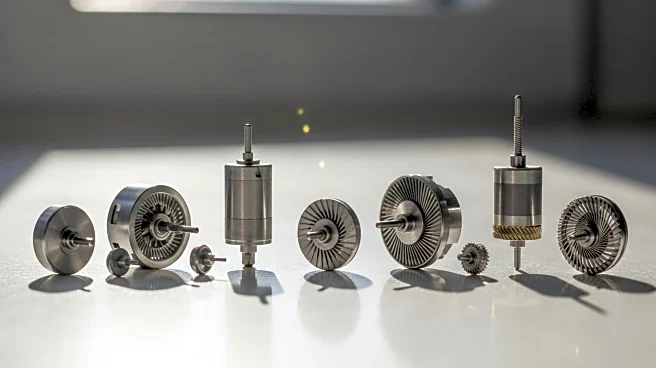What is the story about?
What's Happening?
Researchers at Michigan State University have developed a novel approach using fast lasers to manipulate atoms in quantum materials, potentially leading to more efficient and smaller electronics. The team, led by Tyler Cocker and Jose L. Mendoza-Cortes, combined experimental and theoretical quantum mechanics to explore the properties of tungsten ditelluride (WTe2). By using terahertz pulses of light, they were able to temporarily alter the electronic properties of the material, creating a nanoscale switch. This research could pave the way for advancements in smartphone and computer technology, offering lower costs, faster speeds, and greater energy efficiency.
Why It's Important?
The development of new quantum materials has significant implications for the electronics industry, particularly in the realm of quantum computing. By enabling smaller and more efficient devices, this research could revolutionize the way electronic technologies are designed and manufactured. The ability to manipulate atomic structures at such a small scale opens up possibilities for creating more powerful and energy-efficient devices, which could benefit consumers and businesses alike. Additionally, the collaboration between experimental and theoretical approaches highlights the importance of interdisciplinary research in advancing technological innovation.
What's Next?
The researchers hope to continue exploring the potential applications of these quantum materials in various electronic devices. Future studies may focus on optimizing the materials for commercial use and integrating them into existing technologies. As the research progresses, it could lead to partnerships with tech companies interested in leveraging these advancements for product development. The findings may also inspire further exploration into other quantum materials and their potential uses in electronics.
AI Generated Content
Do you find this article useful?













